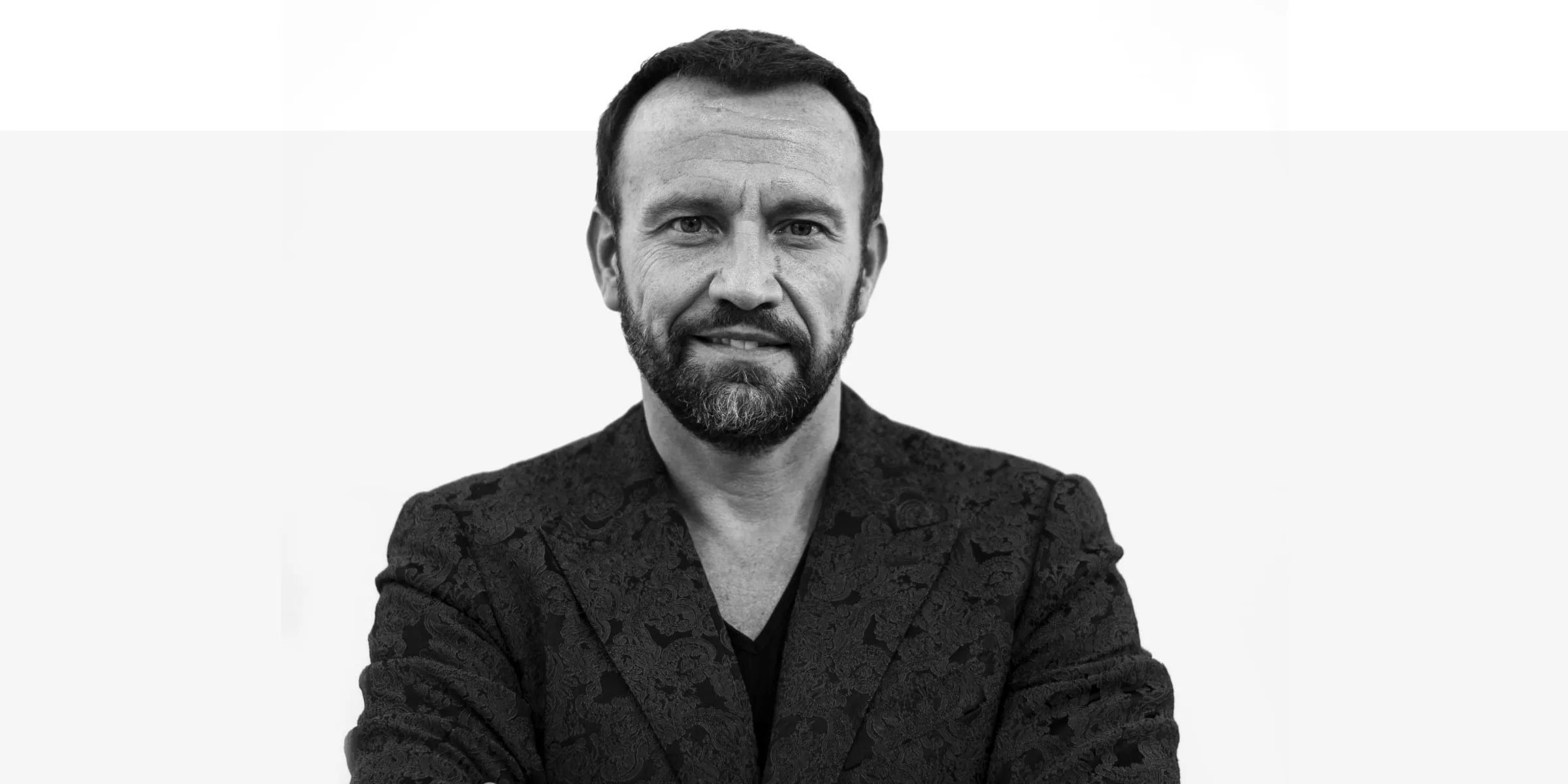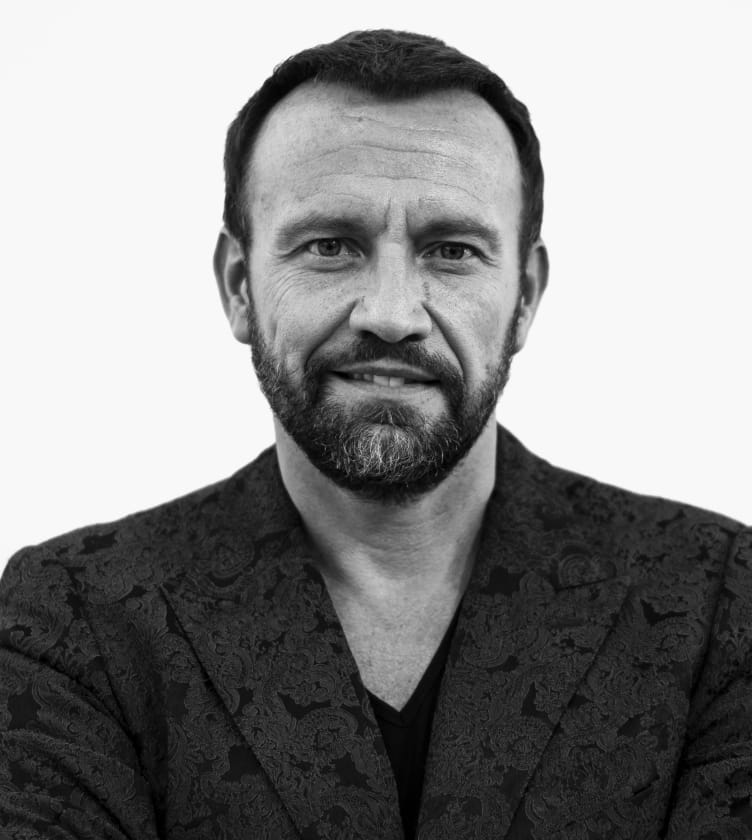PepsiCo’s chief design officer, Mauro Porcini, proves that Design Thinking leads to innovation and tangible results.
Mauro Porcini defines design thinking on his own terms, focusing on three central pillars: empathy, strategy, and prototyping.
On the podcast, he discusses his approach to creating the PepsiCo Design and Innovation Center in New York City, a “startup within a corporation” that helps the food and beverage behemoth spark change and incubate breakthroughs. The Italian-born design mind also shares his limitless, five-step process to shifting company culture.
Read more about how Porcini has fused design thinking and a design-led approach to innovation into PepsiCo’s company culture here.
SPENCER BAILEY: Today on the podcast, we’ve got Mauro Porcini from PepsiCo. Welcome, Mauro.
MAURO PORCINI: Thank you. It’s a pleasure to be with you.
SB: I wanted to start today’s conversation on the subject of design thinking. You’re somebody who actually has brought it to bear in a real, tangible way. And I think the phrase “design thinking” has become … muddled, let’s say. What is design thinking to you?
MP: Well, design thinking is a word—or two words—that have been used and abused by our community and the business community in general. Usually, I talk about three specific pillars that are really relevant when you think about design thinking: empathy, strategy, and prototyping.
Empathy is all about understanding people, their needs and their wants. Once you have these insights, then you need to understand what is relevant for your business. It could be a new business; it could be your established company. So how do you strategize around that insight? In three dimensions: business model, culture, and processes—capabilities of your organization.
So, these dimensions are extremely important, but when designers talk about these often I get pushback from the business community, and they’re like, “Well, wait a second! Empathy? We understand empathy.” Consumer insights, consumer research, is part of marketing in these organizations. “We don’t need designers. And strategy, of course, marketing, business, [our] own strategy… Why do we need designers?” And designers will tell you, “Well, but we look at people in a different way; we look at business in a different way.” And you will start this conversation where at the end of the day, designers will always lose because we don’t have the credibility and we don’t have the resources to drive that kind of decision.
But then there is this third element that is the ability to prototype. So you understand that there is an opportunity in the world. You understand that opportunity makes sense for the company. And you start to create. You make a mock-up, a sketch, you create something that has the amazing power to align people, to enable different communities to co-create with you, to build confidence inside the organization that what you’re doing is the right thing to do. Essentially, prototyping is a way of thinking that drives efficiency, increases quality, and builds confidence in the company. That is so important when you need to take a risk on something that is innovative and new to the world.
SB: Right. Why do you think design thinking has got a bad rap? I mean, on both sides of the equation. You mentioned the business people were like, “I don’t get it.” But designers, too, there are a lot of designers who are like, “Oh, I can’t stand design thinking.”
MP: Well, there is a very clear reason. If you position design thinking as just a process, and you sell this to companies and you tell them, “Well, this is a magic wand. You use this process. You’re going to solve all your problems”—most of the time you will fail. Design thinking is, before anything else, about the people thinking. I often use this analogy or metaphor when I try to explain the value of people and the value of the thinkers behind the processes. And the analogy is: Imagine you are in a room, and your room is your framework, and this beautiful is the perfect room to have the meeting. And you have people in this room, and you have a facilitator that is your tool. So companies always talk about frameworks and tools and how to put people in the room. And they often forget that the quality of the ideas that is going to be generated is all about the quality of thinking of those people. And therefore the quality of those people.
And so many times in companies you talk about, once again, the processes, the design of the organization, and you [take] for granted that you’re going to have great people. And the reality is that often you don’t have the right people for the specific task. To be innovators, to be design thinkers, you need specific kinds of characteristics, and that’s key. And so, we should focus everything, ninety percent of the conversation on: Who are those people, what are those characteristics, how to find them in a company eventually, how to retain them inside the organization, and how to empower them to do what they’re supposed to do.
SB: You joined Pepsi in 2012, and when you came on board, you created this space in New York, the PepsiCo Design and Innovation Center. Talk to me about that. What was your process in terms of creating the space—this physical space here in the city—and how did you imagine it to be a reflection of what you were doing at the company?
MP: When I joined the company, it was not planned to build a design center in the city. And somehow I built a case for our CEO back then, Indra Nooyi, that we actually needed a location in the city. Mostly because I always believed that the design space and innovation space should be collocated within their headquarters, with the business people, with the rest of the organization. Eventually, you reinvent it, you protect it. You want to protect the space and the culture, but within the broader organization.
The problem in the case of PepsiCo is that the broader organization was based in Purchase, one hour driving from New York City. So it was very difficult to move designers from New York City. It’s a unique case. So in [one] way or the other, we were able to make this case for a space in Manhattan. And before getting this space, I was just starting, and I didn’t want to ask too much to the company—money or resources or investment.
So we got a temporary space in the city. There was literally—we used to call it a dungeon, or somebody ironically called it the “palace” but really ironically. It was a tiny, tiny space with water that was dripping from the ceiling, and we even found a mouse, a rat in the building. I always talk about this because that space helped so much the team—at the very beginning, the core team of five, six people, then we grew to ten, fifteen—to bond. There was the feeling of being pioneers. It was exactly like a startup. Today, you see online the images of a Steve Jobs in his garage or Jeff Bezos, for instance, with Amazon written by hand on the wall. We had that kind of feeling, we’re building something from scratch—
SB: Despite being in this massive multinational corporation.
MP: Yes. We feel like we’re a startup within the company. We’re a startup in many ways because we’re building, somehow, a new culture inside the company, the organization. We’re the new function, even after eight years. We’re a new capability; we’re trying to find our way within the company, integrating ourselves with the rest of the company. We’re outside of the company, but we’re part of the company as well. There is always that kind of tension.
And so I’m telling this story because even the first space was really a reflection of our mindset and culture, and this new space now, obviously, we got access to the money of the company, first with part of the space, half of the space we have today. And then the more we were building credibility and lending proof points and successes in the market, the more space we were getting. So now we have a space that is much bigger than when we started.
It reflects our culture today, first of all, because it’s this big, open space where all the different designers are there together, different kinds of backgrounds, different kinds of approaches, but working together. And then we have all these project rooms that in the beginning were dedicated to different famous designers. Every piece of furniture—seating, tables, lighting—was designed by a famous designer, from Karim Rashid to Patricia Urquiola, Naoto Fukasawa, Marcel Wanders… Then we ran out of designers. The challenge was to find a designer who would do chairs and tables and lighting. Not many designers do everything. So at the end I was like, “Okay, we give up on this approach.”
But the importance of this room is in these rooms, all the different teams—design, and then R&D, marketing—all the different cross-functional teams get together to innovate, to create. And so they become a small laboratory where things come to life. And then we have actual laboratories, from a virtual reality room to a music studio all the way to the 3-D printing workshop where we actually create digital and physical things that then become the products that go in the market. So the idea of collaboration and creativity is really what defined that physical space and defined our mindset.
SB: Your team has of course grown. You have around two hundred and twenty people on staff, a hundred here in New York, a hundred-plus also working around the world in London and Moscow, Shanghai, Mexico City, Dallas. How do you manage all of that? And how do the workspaces that you’ve developed accommodate for that?
MP: Well, it’s always a fine trade-off between connecting the different teams in an ongoing conversation and empowering them to be free, and enabling [them] to do what they think is right for the regions. So, on one side, if you just have this conversation, we’ll have people both in the regions and at the center in conference calls all day, all the time and not able to really do their work. If they just do their work and they are totally in power, you may have a totally decentralized organization and it’s not going to work out.
SB: At 3M, you started this sort of time rule, that you call the fifteen percent time rule. You’ve continued that at Pepsi. Tell me a little bit about what that is and how that works. It obviously connects directly to this having-fun conversation.
MP: Yeah, look, I wish I could take credit for that, but in reality, that rule, the fifteen percent rule, was invented by [William L.] McKnight, the great CEO of 3M in the forties. And he’s the guy that actually made 3M what it is today, he’d been CEO I think for forty years. And before that he was—at the beginning of the company—was there. And so he came up with this idea that anybody in the company could spend fifteen percent of their time in what today we may call a pet project, in a “passion project.”
What that really means is that, let’s say, that you are in PepsiCo today and you work in Pepsi, you are the brand designer working in Pepsi, but you are in the company and you understand that maybe there is an opportunity for the brand Lays, or maybe there is an opportunity for a product that nobody envisions yet, that doesn’t exist in the market. So you have the possibility to work on the project for fifteen percent of your time. What that means is that is you cannot tell him, tell her, “Why are you working on this? You have all these priorities. Don’t waste your time in this.” You could never do that. Today we talk about the twenty percent rule of Google. Google, I think, came up with a rule in 2002.
When I came to PepsiCo, I introduced that kind of rule for my own team. And then, there [are] people that take the rule and embrace it and people that don’t care because they have so much on their plate, they’re like, “Well I prefer to just do that.” And it’s very interesting to see who are the [people] that do it?
SB: The dreamers.
MP: Yes, the innovators, the entrepreneurs.
SB: You’ve mentioned before that if you want to change the culture of a business, you have to start at the headquarters. And you also have, in all the research I did, I noticed you used the phrase “leveraging design” a lot. So I’m curious how do you view this notion of leveraging design, and how, in turn, does that connect to this notion of changing culture?
MP: Well, if you look at my job, for instance, to do good design projects, to drive goods design projects is just a component of it. But the vast majority of what I have to do—and by the way, thank God, what I like to do as well—is changing culture. And this is particularly true when you are trying to introduce something different than what usually the company used to do.
In the past twenty years, trying to do this in different kinds of companies, I realized that there are specific phases the culture transformation goes through, and they’re always the same. The first one is the denial. So the company’s like, “Well, I don’t even need design, or I don’t really need music, [or] content creation inside the company.” Whatever it is. It could be a new finance capability—denial: “I don’t need it.” And this is true for so many companies. It’s difficult to admit that you need to do something radically different.
The second phase is what I call the hidden rejection, the phase when you think you’re getting traction, but in reality they are rejecting you and you don’t realize [it]. And it’s the most dangerous one because by the time you realize it may be too late for your new culture. You may have lost six months, one year, and then you need to start again from scratch.
Then you go to the third phase, that I call “the occasional leap of faith.” Essentially, these individuals, I gave a name also to these individuals. They are the “co-conspirators.” So you find these people that are willing to bet on the new capability, to bet on you, on design.
SB: I mean, you had the full buy-in of Indra [Nooyi] when you came to Pepsi.
MP: The proof points are the most important thing. You can talk about design forever and be very eloquent and convince everybody, but until you learn successes in the market, they will never really completely believe you. But once you start to learn these proof points—and they don’t need to be perfect; they need to be good enough to show that there is value in the new approach—then other people want to be part of it. It becomes almost it’s like fire—it’s exponential.
That’s when you start to move to the fourth phase. That is what they call the “quest for confidence.” Essentially, it’s when the company finally realizes that in this new approach there is value and they’re like, “You know what, we want to have much more of this.” So we’ve started to hire more designers and give them more money and resources.
And, at that point, now you need to face the day-to-day. You need to integrate this new capability that is not anymore one person here and there, no. We start to have an investment, a real investment, a lot of people, and you need to integrate them into the processes of the company, the culture of the company.
This is where, usually, the company does the investment, but then things get really tricky and difficult day-to-day, and you lose confidence. So you need designers there, day by day, together with the marketers there, the R&D organization, with all the different functions, to keep the confidence high. That what you’re doing that different way of working, is worth [it], and it’s going to pay off. The ambassadors of the new culture, the new owners of the new capability, need to be in-house because the design, the new capability, is about penetrating the DNA of the company.
And then finally, just to close, the fifth phase is what I call the “holistic awareness.” When people finally get it, design gets integrated inside the organization and you can work all together cross-functionally to drive it to excellence and success in the markets.
SB: The big-picture view. So where would you say you fall now at Pepsi? Are you in stage—
MP: I think that I will be constantly always in [the] “quest for confidence” phase, because as soon as I achieve something I immediately need to challenge the system and try to do something bigger and broader. You’re always trying to do more and better and better and better. You can’t stop. I will be in “quest for confidence” forever. [Laughs]
SB: [Laughs] In a way, that’s like the future of work—you’re always in that mode.
MP: There is always something better to do and someplace to innovate.
There is a poet in Italy from the 1800s. His name is [Giacomo] Leopardi, and he used to talk about… There was a poem, a specific poem called “Il sabato del villaggio”—“Saturday in the Village.” And this poem was celebrating the amazing feeling that you have the day before the Sunday. The Sunday was the day of the party, the celebration, the holiday. The Saturday was the day of the preparation for the celebration.
And you have always that tension and you prepare, you have that excitement, and then when you achieve your goal, you’re like, “Okay…?” There is almost less excitement when you achieve the goal than when you are preparing in the journey. The journey is beautiful. So I’m a journey kind of guy. I need to be constantly in that kind of journey.
SB: Yeah. It’s always Monday for you.
MP: Yeah.
SB: Start of the week.
MP: Yes.
SB: Mauro, this is great. Thanks for coming in today.
MP: Thank you. It’s been a pleasure.




